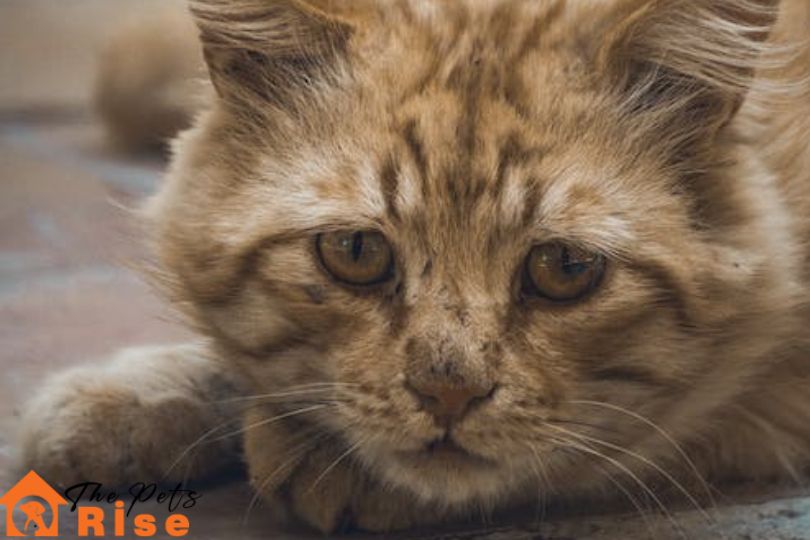Cat depression is real and just like any other living being, they get affected with depression as well. However, because of their nature and our limited knowledge, we can’t easily distinguish if they are depressed or just acting as usual. We all know how mysterious and fascinating Cats can be. They are known for their mysterious behaviors and suspicious expressions.
While it might seem that cats always remain calm, reserved, and minding their business, it doesn’t happen always. Understanding your cat’s emotional state is critical for responsible pet ownership and overall well-being. This article explores cat depression signs, and sadness among cats as well as possible sources of it so we can assist our feline friends in living more fulfilling lives. If you are a first-time cat owner then you shouldn’t definitely miss this article.
The Myth of the Always-Happy Cat
We often observe cats minding their own business, doing what cats like the most, and things go on. Cats may appear calm and self-sufficient animals, but their emotions do fluctuate just like any other living thing. Telling the cat depression symptoms in a cat can be a real challenge especially when you are a first-time cat owner and you have low maintenance cat that doesn’t follow you much.
However, cats experience feelings such as happiness, contentment, fear anxiety, and cat depression just like humans do – although their feelings might not manifest directly like other pets would. Instead, they show the symptoms of cat depression through subtle means that attentive cat owners will learn to identify quickly.
Cat Depression Signs To Observe
Your cat speaks volumes through their look alone; be wary of any telltale signs that could indicate depression in them.
-
Changes in Behavior
One of the most noticeable signs of cat depression is a change in behavior. If your once-playful and active cat becomes withdrawn, lethargic, not touching its favorite cat toys, sitting all day on its bed, or uninterested in their favorite cat activities, this could be a sign of emotional distress.
-
Loss of Appetite
Any cat who suddenly loses interest or stops eating may be experiencing emotional strain. This can be a major sign of cat depression. Monitor their eating patterns closely as an unusual change could signal sadness.
-
Excessive Grooming or Neglecting Grooming
Some cats cope with sadness by overgrooming themselves or neglecting to groom as required. This could be an obvious sign of cat depression, It can potentially lead to skin conditions from overgrooming. While neglectful grooming may leave your feline appearing scruffy and dirty. Both strategies should be observed closely as either may create issues.
-
Hiding
Have you observed that your cat is hiding more than ever, even from you? Cats are known to seek out hiding spots when they’re not feeling their best. If your cat is spending more time hidden away in closets, under furniture, or in other secluded areas, it might be one of the cat depression signs.
-
Vocalization
Have you noticed any change in their vocalization? An increase in meowing or vocalization, especially if it’s accompanied by a change in the tone or pitch of their meows, can be a sign that your cat is trying to communicate their distress.
-
Aggression or Irritability
Some cats may express their sadness through excessive grooming or not grooming regularly enough. Over-grooming may lead to skin conditions while neglectful grooming may leave your cat looking scruffy.
-
Changes in Litter Box Behavior
A major sign of cat depression is the change in their litter box behavior. Sad cats may display changes to their litter box behavior, such as pooping in bathtubs, including urinating or defecating outside it, which could indicate emotional distress or medical concerns underlying in their system. As soon as this behavior begins to emerge it’s important that it’s discussed with a licensed veterinarian as soon as possible and immediate attention needs to be sought if this behavior persists.
Potential Causes of Cat Depression
There can be some obvious reasons behind your depressed cats. From
-
Changes in Routine
Cats are creatures of habit and any significant change to their daily schedule can cause discomfort – for instance moving home, changing feeding times, or the introduction of new pets.
-
Loss or Absence of a Companion
You can observe symptoms of cat depression when your cat is all alone as well. Cats often form deep bonds with both human caregivers and other pets, including other cats. Losing one of these companions, be it another cat or another family member, can bring immense sadness.
-
Environmental Stressors
Environmental stressors such as loud noises and construction work, new people or animals entering their territory, or loud sounds from distant vehicles may make cats uneasy and cause them to experience stress. This may make their overall experience unpleasant as a cat feels vulnerable in unfamiliar territory and they become worried.
-
Illness or Pain
Physical discomfort or illness can have a dramatic impact on a cat’s mental well-being, leading to depression or anxiety in their behavior. Dental, arthritis, or digestive conditions are known to contribute significantly to depression or anxiety among cats.
-
Neglect
Cats can show signs of sadness or depression when they don’t get enough attention from their owner as well. Cats need love and affection from their owners in order to feel fulfilled and safe. Neglect, whether intentional or accidental, can leave cats feeling isolated and lonely.
-
Boredom
Cats are intelligent animals who require stimulation both mentally and physically in their environments in order to remain contented and happy. An environment without adequate enrichment may result in boredom and sadness for your cat.
How To Help Your Cat in Depression?
As a responsible pet cat owner, you will want to know how to help your cat with depression. Here is what you can do:
-
Consult a Veterinarian
If your cat seems sad, or you observed the signs of cat depression then the first step should be addressing any medical conditions that might explain its change in behavior. Consult a veterinarian as soon as possible in order to make sure there aren’t any physical reasons for their change of disposition.
-
Provide Emotional Support
Spend quality time with your cat, offering gentle affection and play. Make them aware that you are there for them. Let them know you care.
-
Maintain a Consistent Routine
Cats thrive when given a consistent daily schedule to reduce anxiety. By adhering to their routine as best possible, try keeping their daily schedule predictable to ease any stressful or anxious behavior in their day-to-day lives.
-
Create a Stimulating Environment
Provide them best cat toys, scratching posts, and opportunities for mental and physical stimulation for your cat. Puzzle feeders or interactive toys may keep them entertained for extended periods.
-
Offer a Safe Space
Create a safe place where your cat can go when she needs some relaxation time away from all of the daily rigors of household living.
-
Consider a Companion
If you observed signs of cat depression because your cat recently experienced the loss of a companion, consider adopting another pet as soon as possible; just ensure proper introductions occur for an amicable relationship to ensue.
-
Professional Help
In cases of extreme sadness or depression in felines, professional animal behaviorists or cat therapists can offer expert guidance.
Conclusion
As responsible cat owners, it’s our duty to recognize signs of cat depression and sadness and take appropriate actions to alleviate it. By creating an atmosphere filled with affection and support as well as adhering to an established routine and seeking professional assistance when necessary, you can help your pet cat overcome feelings of sadness and lead a more fulfilled existence. It is true that happiness equals health when it comes to cats – emotional well-being should not be considered secondary. You can check our cat care blog for more articles like this.







